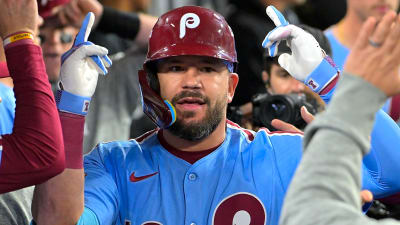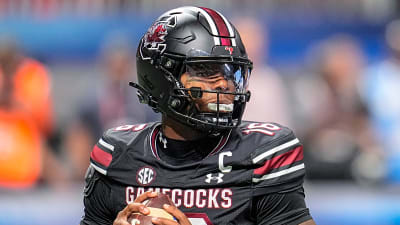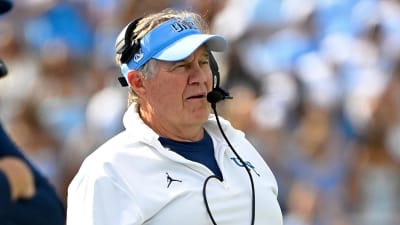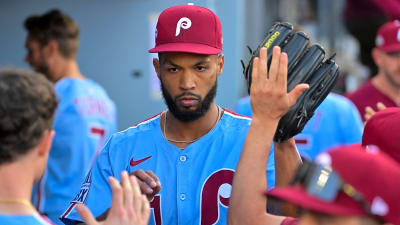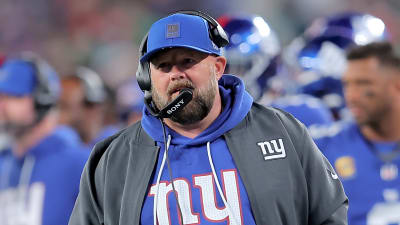
CHICAGO –– For an obvious seller, the White Sox making just two deals before July's trade deadline may have surprised some.
They sent veteran outfielder Austin Slater to the New York Yankees for right-handed pitcher Gage Ziehl, who's ranked No. 15 among White Sox prospects by MLB Pipeline. And after signing Adrian Houser midseason from Triple-A, they flipped him to the Tampa Bay Rays for infielder Curtis Mead and pitching prospects Duncan Davitt and Ben Peoples.
But despite months of rumors, former All-Star center fielder Luis Robert Jr. stayed put, as did several other veterans who may have made sense for the rebuilding organization to trade for younger pieces. That made Mead a player to watch in the second half of the season, as the White Sox aimed to identify players who could be part of the future.
Mead joins White Sox
The 24-year-old infielder played in 41 of the White Sox final 53 games, an opportunity he called "everything that I wanted to get at the start of the season with Tampa that I didn't get." Mead made his MLB debut in 2023 with the Rays, but he was stuck behind everyday players and appeared in just 111 games across three seasons.
Getting a longer runway with the White Sox, Mead's second half in 2025 came with mixed results. He put together a productive stretch from Aug. 6 to Sept. 5, batting .299 across 93 plate appearances. But he finished the season on a sour note, going 2-for-19 in his final nine games.
That dropped Mead's slash line with the White Sox to .240/.280/.304/.584 with zero home runs, eight doubles, 11 RBIs, one stolen base, three walks and 30 strikeouts in 132 plate appearances. He played 22 games at third base and 13 at first base, and also has previous experience at second base and shortstop –– versatility he feels can benefit the team and boost his playing time.
What's next for Mead on the White Sox?
Mead isn't eligible for arbitration until 2028, so the White Sox can bring him back in 2026 at a low cost. As for his future with the team, he hopes to have shown some positive traits that lead to a role on the Major League club next year.
"Hopefully a good impression. I feel like I've been trying to work my butt off and play hard and be competitive," Mead said on Sept. 21. "So yeah we'll wait and see."
"I think my first couple years in the big leagues, I didn't necessarily get the consistent reps that I would have liked to be able to learn and make the adjustments. So I think that's something I've been fortunate to be able to get here, and I feel like I've learned a bunch early on and I've been able to make some adjustments of recent which has been good."
Mead typically spends a majority of his offseason in his home country of Australia, but said he'll also be in Arizona this year. After failing to hit a home run with the White Sox in 2025 and having just five across 152 career Major League games, he'll look to improve in that area this offseason.
Despite his low home run output, there's reason to believe more power could be in the tank. Mead's 73.3 mph average bat speed ranked 118th in MLB and third among White Sox players with at least 200 swings, per Statcast. That's only behind Colson Montgomery (11th in MLB, 77.0 mph) and Luis Robert Jr. (28th, 75.6 mph), who combined for 31 home runs in 181 games.
Mead's Minor League career suggests there could be some untapped power, too. He hit 13 home runs in 91 games in 2024 in Triple-A, as well as nine home runs in 61 Triple-A games in 2023 and 10 home runs in 56 Double-A games in 2022.
"I think in the offseason it'll definitely be around impacting the ball and probably searching for a couple more extra-base hits," Mead. "I think the nice thing about that is that I do have good bat speed, so it's not necessarily something that is foreign to me and something that I haven't done in the past. I think just getting to the front of the ball a little more consistently."
The White Sox also must consider where Mead fits around the diamond –– first, second or third. Rookie Chase Meidroth manned second base down the stretch and made a solid case to be the everyday second baseman in 2026, so much so that Mead didn't play second after appearing in 42 games there in his Rays career.
Lenyn Sosa played 99 games at second base, but his defensive shortcoming warranted a move to first base and designated hitter for the majority of games in the final months. Miguel Vargas led the White Sox in appearances at first and third, while also taking a step forward at the plate in his second year on the south side.
The White Sox could opt to play Sosa as the designated hitter, with Mead at third, Vargas at first, Meidroth at second and Montgomery at shortstop. But that gets complicated when considering the team wanted catchers Kyle Teel and Edgar Quero in the lineup as much as possible late in the season, with one as the designated hitter. Veteran outfielders Andrew Benintendi and Mike Tauchman also played 44 and 19 games, respectively, at designated hitter.
That gives the White Sox some decisions to make with Mead and others going into next season, one they hope comes with more progress after a 19-win improvement in 2025.
"It's exciting," Mead said. "I feel like the second half has been really cool for some young guys to get some opportunities, and a lot of them have been taking them and playing really well. So I think that's definitely something to look forward to, and I think ideally everyone comes back bigger, better and stronger next year."
More must-reads:
- Yankees shortstop undergoes shoulder surgery
- Ranking four potential World Series matchups based on excitement level
- The 'MLB playoff debut strikeouts leaders' quiz
Breaking News
Trending News
Customize Your Newsletter
 +
+
Get the latest news and rumors, customized to your favorite sports and teams. Emailed daily. Always free!
